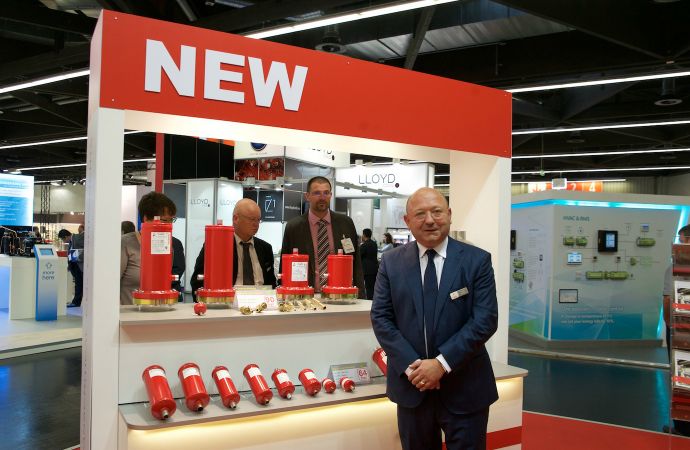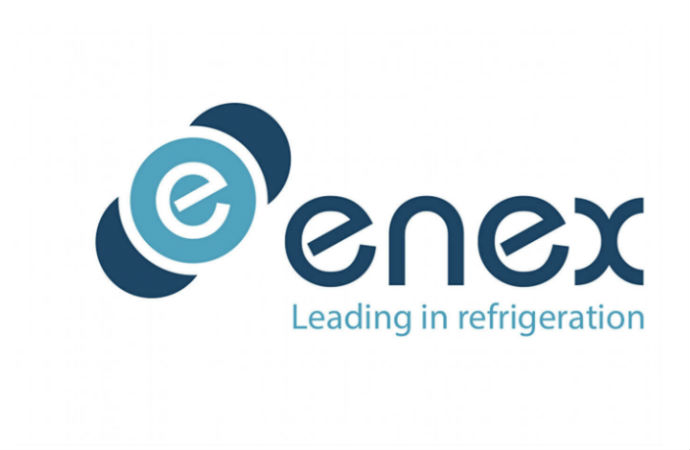R744.com had the opportunity to speak with the Chief Executive at Enex, Sergio Girotto, about the company’s successful installations in warm climates with its CO2 transcritical refrigeration systems using ejector technology.

R744.com: What is the status of refrigeration units for warm ambient temperatures?
Sergio Girotto: We’ve been producing refrigeration units specially designed for high demanding environments since 2013, and they are now available as standard products. During the past months, July and August, in some areas of Italy, but also in other countries, ambient temperatures reached peaks of 40-42°C for several weeks. This summer definitely proved our technology works well and efficiently in such demanding environments.
R744.com: What features of Enex’s transcritical CO2 systems help to improve efficiency in warm ambient temperatures, and how do they achieve this?
Girotto: We are using various design concepts - part of which are patented or patent pending - but certainly the most interesting are the liquid overfeeding ejector, which typically allows for an increase in evaporating temperature from -8°C to -3°C, and the energy recovery gas ejector used with auxiliary compressors, which directly compress flash gas from the liquid receiver. The expansion energy is used in the first case for pumping liquid, from overfed evaporators, back to liquid receivers and in the second case as a first compression stage. The beautiful thing is that the “pump” and the “compressor” are static devices without moving parts. Enex has developed these innovations over the past years, and to date has installed more than 80 systems with auxiliary compressors (the first one in 2008) and more than 30 systems with liquid or gas ejectors (the first one in 2011). The success of the technology is further proven by the fact that the industry, including the main rack manufacturers, is now following Enex solutions.
R744.com: In terms of general operation and ease of installation how have the CO2 systems performed? Have you received detailed feedback from end users?
Girotto: There are several energy reports that clearly demonstrate the huge energy savings, at least 25% on annual base and more than 30% at peak conditions, when the above three design concepts are adopted at the same time, compared with conventional designs. See for example the energy analysis presented by Frigo-Consulting (Switzerland) at ATMOsphere Europe 2015. Some energy measurements performed by contractors confirm the results, and more energy analyses are underway now. One of them is being carried out directly by SINTEF Energy Research (Norway). Installation is often simpler than for standard systems.
Regarding the feedback from end users, they are clearly satisfied - both in terms of reliability and efficiency. One customer told us he was surprised at the low energy consumption, in both winter and summer. This is also demonstrated by the fact that satisfied end-users continue to opt for high efficiency Enex solutions.
R744.com: When and by whom was this concept developed?
Girotto: In 2010 SINTEF completed a complex experimental and theoretical study about fixed ejectors, but the industry didn’t know how to use them in practice. Enex developed and implemented the first concept of “liquid overfeeding with ejector” at the end of 2010, with the first installations coming out in 2011. A liquid ejector accounts for more than 50% of the advantage of the complete solution, in all climatic conditions. In 2011 Enex also started to develop the concept of application of vapor ejector technology, the effects of which are quite relevant in warm climates. A significant step forward was made in 2013, when there was the opportunity to install some large plants fully equipped with liquid and vapor ejectors in Switzerland, in close cooperation with Frigo-Consulting, Alpiq Intec West and SINTEF. Now several large and important installations are working with these solutions and more plants are on the way..
R744.com: Why do you think CO2 transcritical solutions for warm ambient temperatures are not yet taking off?
Girotto: I think they are taking off, but the process is slow, basically for two reasons. The first and most important one is that the use of CO2 in Spain, Italy and other warm areas is taking place with a delay because it is much more difficult to make a CO2 system efficient in southern Europe than in the UK or Scandinavia. I would define the second reason as “commercial inertia”: some end users prefer to wait until these solutions are proposed by their local suppliers, in which case it might take a very long time.
R744.com: Where are Enex's main distribution markets? And do you find there are limitations with this type of technology in terms of markets you can supply?
Girotto: At the moment, Enex is selling only within Europe, but there are no limitations with regard to markets; Enex solutions can be used everywhere, though sometimes local legislation and required certification can pose a challenge.
R744.com: In response to this, how do you see the CO2 transcritical market evolving in the next five years and, as a result, Enex's business/market opportunities?
Girotto: I think that the market for the transcritical CO2 technology is huge, especially now that it is proven there are no geographical limitations. What I have described is the most efficient and practical solution, and it is available now. We are obviously interested in evaluating business opportunities outside Europe.
MORE INFORMATION
Related stories





